In
essence, the smaller denizens of the grasslands (including the myriad of
insects inhabiting this biome) live in a forest-like environment – not under a
canopy of leaves and between tree trunks, but rather between the culms and the
inflorescences of the taller grasses. Their environment is dense and provides
for ample opportunities either to shelter or to escape from predators.
Moreover, these smaller organisms, experience subtle stratification of the
environmental factors (such as light intensity, temperature and humidity) from
ground level upwards to the top layer of the grasses. These littlies can move
up and down in their environment to modify, albeit very slightly, the influence
on their tiny bodies of a few environmental factors. For example, any small
motile animals living in the grasslands can escape the heat of a summer’s day by
moving down to the shaded ground level; they can escape desiccating winds, again
by sheltering at the bases of the grasses. Despite these advantages, the
differences between day and night are significant and can prove to be
challenging to the small inhabitants; at night the grasslands become much
colder, as a lot of heat is re-radiated to outer space, while far less heat is
trapped in the sparse biomass of the vegetation. Of course, for the larger
animals the grasslands are essentially two-dimensional environments, with the
subtle changes in environmental conditions proving insignificant (apart from
changes from day to night).
For
many animal species, the grasslands become uninhabitable during the winter
seasons. In general, two responses have evolved to this challenge. Those motile
organisms that can not cope with the prolonged dry, cold times will migrate to
areas that are more amenable in environmental conditions. The larger herbivores
often partake in long-distance migrations, following the patchy and
intermittent rainfall. Many bird species are trans-equatorial migrants, using
long-distance flight to inhabit grasslands only during the wetter summer months
in both hemispheres.
Many
of the smaller organisms that are not able to escape from the rigours of the
winter season by migration over large distances enter a period of dormancy,
often for significant stretches of time. In regions of the planet with warmer
climates, many insects living exclusively in grasslands aestivate during the most
arid months. Populations of active insects will fluctuate in number seasonally;
moreover, the occurrence of large, stable populations of insects in local areas
of grasslands tends to be less predictable than in other biomes. A number of
insect taxa do cope well with the environmental conditions in grasslands. These
include orders of insects such as the Orthoptera (including grasshoppers and
locusts) and the Hymenoptera (including ants). The very successful insects
consume the leaves of grasses themselves, or they harvest, store and consume
the grass seeds.
For
the much larger vertebrate herbivores that inhabit the grasslands, food is
present in abundance, provided the animals can graze the grasses themselves,
feed on the grass seeds or select the herbs nestling deeper down between the
grasses. Although the biodiversity of grassland plants is generally very high,
the vegetation types available for herbivores is limited to grasses and
smaller, usually non-woody flowering plants that grow here. Consequently, the
diversity of animal life that is supported by grasslands is impoverished (in
general) when compared to other biomes like the woodlands and forests, at least
in terms of the number of species that inhabit the grasslands. This is not
necessarily the case in terms of the number of individuals that live in the
grasslands, since adaptation to this periodic environment has occurred in many
groups of organisms (such as the grasses themselves, and the flock-forming
seed-eating birds and the herd-forming grazing antelopes).
Amongst
the numerous antelope species living in grasslands and open savannas, an
interesting correlation exists between the size of individuals of a species and
the social behaviour that has evolved in that species. The smaller browsers and
grazers require vegetable food sources of high nutritional quality. Their
bodies have a small volume compared to their surface area. To keep fuelling the
high rate of cellular respiration required to maintain a constant and high core
body temperature, these small antelope must be highly selective in the food
that they consume. Therefore, small antelope species are solitary or live in
small family groups.
In
the much bigger herbivores, the quality of the food is not that vital. Inherent
in the large size is a decreased ratio between the surface area of the organism
and its volume that allows for a slower basal metabolic rate than that found in
smaller species. With a small surface area compared to volume, large organisms
are not faced with excessive heat loss through their skin. At the same time,
the larger volume allows for the digestion of the food to proceed at a slower
pace. Large antelope can graze grasses and allow the digestion to take place
over time; hence the evolution of multi-chambered stomachs and the behaviour of
chewing the cud in the antelope species. The alternative strategy, seen in
horses and zebras, for example, involves the evolution of a large caecum; in essence,
this is a spacious storage vat in the hindgut in which vegetation can be
decomposed by bacterial action. Whatever the anatomy of these larger
herbivores, they can survive easily in vast herds since the food they consume
is more easily available, albeit of low nutritional value.
Add
to this another benefit: the relatively low height of the grassland vegetation
allows for vigilance against predators for the larger animal species. Living in
a large group means more eyes and ears, as well as a smaller chance that a
particular attack by predators will result in the death of any one of the
members of the group. (Of course, one of us will die, but the chance of it
being I is lessened in a large group.) The ability to live in larger herds has
necessitated some form of herd co-operation and control that is complex enough
to promote social cohesion, especially during courtship and mating. So vast
herds of large grazers occupy the grassland environment, tracking the
intermittent rainfall in spectacular long-distance migrations. Their predators,
too, follow the migrations, but to a lesser extent – territoriality between
carnivores well-equipped with the weapons of their trade can be intense and will
limit the movement of groups of predators.
Another
feature vital for the survival of mammalian herbivores in grasslands is the
production of precocial young, that is, babies that are fully functional very
soon after birth. The gestation periods of grassland herbivores is lengthened,
in general, and the newborn is able to be on its feet and run with the herd
within minutes after birth. In the smaller herbivores, where no herd behaviour
is found, the young are precocial nevertheless, although they will often hide
in denser vegetation or denser patches of grassland near where the mother is
feeding.
The
lack of tall vegetation in which predators can conceal themselves has
necessitated the evolution of larger carnivores that can run down their prey,
rather than relying on concealment and a pounce at close quarters. Three
strategies in hunting prey among the larger carnivores prevail in grasslands:
sheer speed of pursuit, endurance of long-distance chasers or the use of
elaborate hunting strategies in larger social units of predators. Predators
that rely only on speed still live either as solitary individuals or in small
family groups, usually a female and her offspring only. This is often not the
case with the two other groups – the long-distance chasers and the strategic
hunters both require the co-operation of several members of the group in order
to kill prey. This interdependence of members of a group for effective hunting
goes hand in hand with more complex and elaborate social behaviour. Maintaining
co-operation in a pack or pride requires social interactions that promote group
cohesion, such as appeasement behaviours and social ranking of individuals
within the group. Invariably, a hierarchical social system develops in these
predatory species.
For
the rodents, the omnivores and the smaller carnivores of the grasslands,
shelter from the harsh environment, concealment from predators, or safety
during reproduction is often found in burrows. The grassland environment, with
its relatively deep soils and the top layer of the soil knitted together by the
adventitious root systems of the grasses allows deep tunnel systems to be
excavated by many animals that have the strength and the equipment (such as
large claws) to do so. Subsequent occupation of the burrows by a host of other
species – comprising individuals that themselves can not dig effectively –
means that these tunnel systems often stay in use for long periods.
Photographing wildlife in grasslands is challenging. The larger species
(mammals and birds) will flee readily and they can not be approached without
difficulty. The unpredictability of the occurrence in any specific area of
larger animal species can be taxing too. For me, portraying the grasslands has
remained a test that I accept with glee. To display the magnificence of this
biome and its menagerie of inhabitants will remain a special privilege always –
particularly so since I too am an original inhabitant of the Highveld’s grasslands.
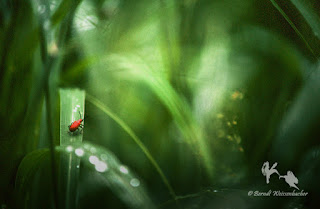
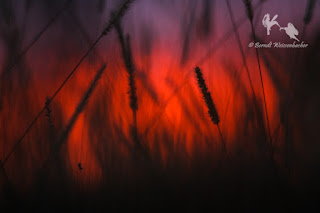

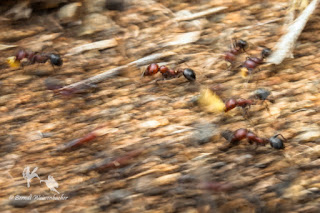

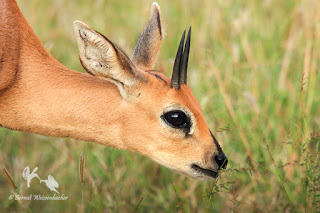

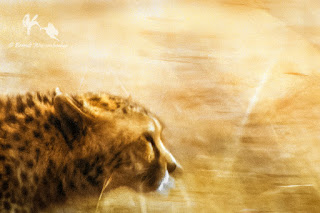
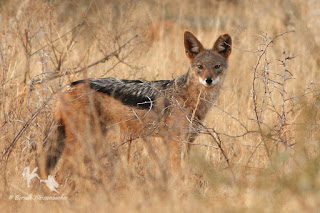

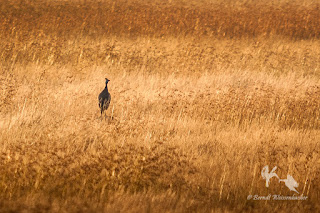
No comments:
Post a Comment